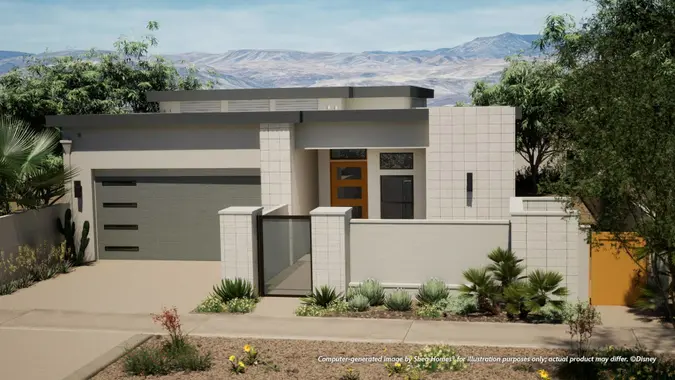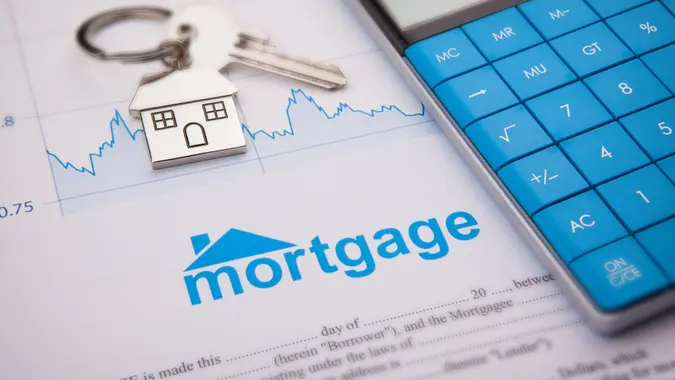Here’s How Much Each Generation Is Tapping Into Home Equity — but Should They Be?

Commitment to Our Readers
GOBankingRates' editorial team is committed to bringing you unbiased reviews and information. We use data-driven methodologies to evaluate financial products and services - our reviews and ratings are not influenced by advertisers. You can read more about our editorial guidelines and our products and services review methodology.

20 Years
Helping You Live Richer

Reviewed
by Experts

Trusted by
Millions of Readers
Tapping into your home equity is a pretty straightforward way to access cash that might otherwise be hard to come by, and a recent Experian study reveals that more homeowners across generations are turning to home equity lines of credit (HELOCs).
That said, even though tapping into the wealth you’ve accumulated in your home is better than incurring expensive credit card debt, it still comes with some risks that you should know about.
Here’s a quick breakdown of how each generation is using home equity and whether it makes financial sense for you.
How Much Home Equity Is Being Tapped?
According to Experian’s recent survey, HELOC debt nationwide went up by 7.2% in 2024 — the third straight year of increases. But some generations are tapping into their home equity more aggressively than others.
- Millennials’ and Gen X’s HELOC balances both grew by 8.2% in 2024, and both generations’ average balances exceeded $50,000.
- Gen Z borrowers have lower balances, around $40,539 on average, which makes sense given their newer entry into the housing market and limited home equity.
- Baby boomers and the Silent Generation have seen more modest increases in their HELOC usage at 3.7% and 1.1%, respectively, likely because many are nearing or already in retirement and are less inclined to take on new debt.
Why the Surge in HELOC Usage?
One reason for the spike is today’s interest rate environment. “HELOCs tend to be popular in times like now when prevailing interest rates are higher than a homeowner’s first mortgage rate,” according to Experian’s Susan Allen.
So with mortgage rates hovering around 7%, naturally, fewer homeowners will want to refinance and risk giving up their locked-in low rates. Instead, they’re using HELOCs to borrow against their home equity without disturbing their existing mortgage.
HELOCs also offer more flexibility than home equity loans since you can draw only what you need and just make interest-only payments during the draw period.
What You Should Consider Before Taking Out a HELOC
HELOCs aren’t right for everyone. Here’s what to consider before taking out a home equity line of credit.
Your Repayment Plan
HELOCs often come with a draw period (usually five to 10 years) where you can borrow money and make interest-only payments. After that, you enter the repayment phase, which can significantly increase your monthly payments. So ask yourself: Can you comfortably afford those future payments, especially if rates rise?
Interest Rate Risk
Most HELOCs have variable interest rates. That means your rate, and your monthly payment, could go up with market changes. If you’re on a tight budget, this uncertainty could make it hard to manage long term.
How You Plan To Use the Funds
Using a HELOC to fund value-adding projects like home renovations can make financial sense. But using it for things like vacations or ongoing living expenses could put you on shaky ground. Treat it as an investment tool, not a shortcut for lifestyle inflation.
Your Home’s Current Value
Make sure you’re not borrowing too much against your property. If home values drop, you could owe more than your home is worth, which can be a risky position to be in if you need to sell or refinance later.
Should You Take Out a HELOC?
Just because you can tap into your home equity doesn’t mean it’s always a good idea.
Though borrowing against your home often comes with lower interest rates compared with credit cards or personal loans, you could risk foreclosure if you can’t keep up with payments.
Plus, many HELOCs come with variable interest rates, which means your payments can rise unexpectedly as rates go up. And in the case of a declining housing market, homeowners who over-leverage could find themselves underwater.
More From GOBankingRates
Sources
- Experian, “HELOC Balances Surpass $45,000 in 2024.”
 Written by
Written by  Edited by
Edited by 

























